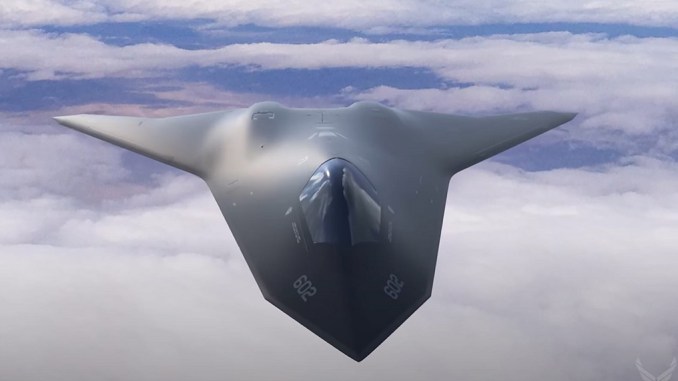
NGAP Prototype, referred to as XA103 engine, meant for the Next Generation Air Dominance program, is expected to start ground testing in the late 2020s.
Pratt & Whitney completed a key design review of its Next-Generation Adaptive Propulsion prototype being offered to the U.S. Air Force for the Next Generation Air Dominance platform. The prototype, referred to as XA103, is now moving closer to completing its detailed design review, ahead of the ground testing expected to occur in the late 2020s.
“We are embracing digital transformation with NGAP and changing the customer experience through the entire development process in order to rapidly and efficiently deliver these advanced adaptive engines,” said Jill Albertelli, president of Pratt & Whitney’s Military Engines business. “This technology is critical to maintaining air superiority, which is why Pratt & Whitney has made significant investments in research and development and advanced manufacturing. Continued government funding for sixth-generation propulsion development must remain a high priority to support critical platform milestones and warfighter readiness.”
The company said that novel technologies are being developed for the Next Generation Adaptive Propulsion program to provide advanced survivability, fuel efficiency, and robust power and thermal management. These are necessary to enable the required range, weapon and sensor capability, and the persistence that future air dominance platforms will require to meet challenging operational needs.
The technologies and architectures of the NGAP program are being informed by the U.S. Air Force’s investment in the Adaptive Engine Transition Program, whose learnings are considered invaluable as some of the technologies could be “portable” between the two programs. Pratt & Whitney also mentioned it embraced digital design from the start, as well as implementing of agile methodology to cut lead times and improve efficiency and effectiveness to deliver advanced capabilities.
As you may already been aware, the NGAD sixth generation platform is expected to replace the 5th gen F-22 Raptor beginning by the end of this decade, according to the Air Force’s plans which account to award a contract for the design this year. Unlike the F-22, however, NGAD is a family of systems which includes both a manned aircraft and unmanned Collaborative Combat Aircraft (CCA) also previously known as Loyal Wingmen.
The Air Force has said that NGAD will develop four publicly acknowledged technologies, each possibly assigned to a different company, that will end up in the final design: propulsion, unmanned systems, materials and sensors. For propulsion, a large potential Air Force contract under the Next Generation Adaptive Propulsion program (NGAP) has been awarded in 2022 to Lockheed Martin, Boeing, Northrop Grumman, General Electric and Pratt & Whitney.
- SEO Powered Content & PR Distribution. Get Amplified Today.
- PlatoData.Network Vertical Generative Ai. Empower Yourself. Access Here.
- PlatoAiStream. Web3 Intelligence. Knowledge Amplified. Access Here.
- PlatoESG. Carbon, CleanTech, Energy, Environment, Solar, Waste Management. Access Here.
- PlatoHealth. Biotech and Clinical Trials Intelligence. Access Here.
- Source: https://theaviationist.com/2024/02/13/ngap/?utm_source=rss&utm_medium=rss&utm_campaign=ngap




